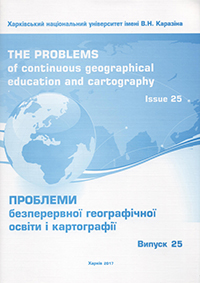Economic system as the basic object of study in the general educational institutions
Abstract
This article analyzes the prevailing practice of studying the economies at different levels in schools of Moldova, Russia and Ukraine. The main attention is paid to the development of methods of studying modern conceptual device that describes the nature, composition, structure and parameters of economic systems in educational institutions. In modern textbooks that are currently used in general education institutions there are some basic concepts and indicators, which allow to fully understand the world economy, economy of states and regions. There are such categories as “economic system”, “model of the economy”, “structure of the economy”, “the branch of the economy”, “sphere of economy”, “sector of economy”. The analysis of school textbooks on geography and other subjects indicates the need for detailed assimilation of information concerning systems, their types, composition, structure and functions. The study of economic and social geography should be paid main attention to the economic system. This article presents the author’s version of the “economic system” concept’s interpretation with all its constituent elements, reveals the functions of economic systems, the types of economic products and services produced by them, examines the levels from global to local ones with specific examples.
Various types of economic structures are shown:
1) sectoral, reflecting the relationship between industries;
2) interbranch, reflecting the relationship between interindustry complexes;
3) territorial, reflecting the share of individual regions in national indicators or the share of countries in global indicators, as well as the spatial location of production and non-production facilities;
4) tiered, reflecting the relationship between the primary, secondary and tertiary sectors of the economy;
5) two-sphere, reflecting the relationship between the production and non-production spheres;
6) organizational and legal, reflecting the relationship between the forms of ownership and organizational and legal forms of management.
Downloads
References
2. Bahchieva, O.A. (2013). Geografija. Jekonomicheskaja i social’naja geografija mira: 10-11 kl. [Economic and social geography of the world: 10-11 forms]. Moskva: Ventana-Graf, 400.
3. Alekseev, A.I., etc., ed. (2014). Geografija. Rossija. 8 kl.: Ucheb. dlja obshheobrazovat. organizacij [Geography. Russia. 8th form: Textbook for general education organizations]. Moskva: Prosveshhenie, 255.
4. Domogackih, E.M. (2013). Geografija: Naselenie i hozjajstvo Rossii: Ucheb. dlja 9 kl. obshheobrazovat. uchrezhdenij [Geography: Population and economy of Russia: Textbook for the 9th form of general education institutions]. Moskva: OOO «Russkoe slovo – uchebnik», 280.
5. Kachan, Ye.P., ed. (1999). Ekonomichna i soczial`na geografiya svitu [Economic and social geography of the world]. Ternopil`: Aston, 332.
6. Kuznecov, A.P. (2014). Geografija. 10-11 kl. Bazovyj uroven’: Ucheb. [Geography: 10-11 forms. Basic level: Textbook]. Moskva: Drofa, 367.
7. Maksakovskij, V.P. (2001). Jekonomicheskaja i social’naja geografija mira: Ucheb. dlja 10 kl. obshheobrazovat. uchrezhdenij [Economic and social geography of the world: Textbook for the 10th form of general education institutions]. Mosrva: Prosveshchenie, 350.
8. Holina, V.N. (2013). Geografija. 10 kl. Uglublennyj uroven’: Ucheb. [Geography: 10th form. Advanced level: Textbook]. Moskva: Drofa, 319.
9. Chubarje, S., Kalanda, Z., Primenchuk, M. (2008). Jekonomicheskaja i social’naja geografija mira : Ucheb. dlja 11 kl. [Economic and social geography of the world: Textbook for 11th form]. Kishinev: Lumina, 232.





